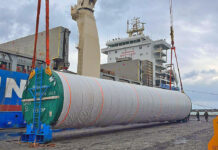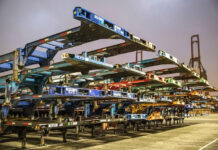
Container shipping in 2024 will undergo major changes as the laws governing the industry are set to be transformed in the first four months of the year, including the end of consortia and the introduction of carbon mitigation measures, both of which could cause uncertainty for carriers and shippers alike.
The European Commission (EC) has announced this week that container shipping’s much-contested Consortia Block Exemption Regulation (CBER) will not be renewed after it expires on 25 April 2024. While its much-trailed European Union Emissions Trading System (EU ETS) will apply to shipping from January, with some carriers already estimating the surcharges to be added to shipper consignments.
Shippers have been battling against the CBER for some years, raising concerns about the level of collaboration that the exemption afforded to lines, which came to a head during the pandemic, which saw carriers manage capacity, maintaining high rates in an already congested market.
Even so, the EC renewed the CBER in 2020, for a four-year period, one year less than usual, and began a review of the rule in 2022.
Delays into making a decision on the renewal for 2024 have had shipper representatives on edge, but finally this week the EC said that the CBER had had a “low or limited effectiveness during the 2020-23 period.
Adding, “Given the small number and profile of consortia falling within the scope of the CBER, the CBER brings limited compliance cost savings to carriers and plays a secondary role in carriers’ decision to co-operate. Furthermore, over the evaluation period, the CBER was no longer enabling smaller carriers to cooperate among each other and offer alternative services in competition with larger carriers.”
In a carrier response to the decision taken by the EC, the president and CEO of the carrier representative body World Shipping Council (WSC) John Butler said that the EC’s recognition of the benefits of vessel sharing agreements is critical going forward.
“The shift to general EU antitrust rules will create a period of uncertainty as carriers adjust to the new legal structure. Nevertheless, vessel sharing agreements will remain a fully legal and supported way for carriers to ensure efficient and sustainable transport for Europe,” added Butler.
EC regulators have also been in discussions with regulators in the United States and Asia and these other jurisdictions are expected to follow suit, not least because as James Hookham, director at the Global Shippers’ Forum (GSF) pointed out, it would be difficult for lines to operate under different sets of rules in other jurisdictions, ultimately raising costs.
Freight forwarders welcomed the EC’s decision, with Nicolette van der Jagt, the director general of the forwarders’ association CLECAT, noting, “We are pleased that the Commission has listened to the voice of the customers, freight forwarders and their shipper clients. For many years, we have told the European Commission that the Regulation is no longer fit for purpose.”
According to van der Jagt, the decision to discontinue the CBER means that there is a “better basis for trust” between the lines and their customers.
Meanwhile, further uncertainty will be engendered by the introduction of shipping into the EU ETS in January.
The EU ETS is a cap and trade system, which means the EU caps the total emissions to be emitted in a year, and will steadily reduce that cap with a view to reducing emissions. Companies will receive some EU allowances (EUA) free, but generally will need to buy an EUA for each tonne of carbon or equivalent GHG emissions emitted.
Shipping lines are expected to pass on the charges to their customers. However, they will need to monitor emissions from January and report those emissions before paying for the EUAs in September 2025. Given that this is shipping’s first year carriers are uncertain of the amounts they will need to pay.
So far, three carriers have indicated the surcharges they will make to cover the costs of the EU ETS, but these indications reflect the uncertainty in the system.
Hapag-Lloyd has indicated charges of €12/TEU for a dry container and €31/TEU for reefers, compared to CMA CGM’s €25 and €40/TEU respectively, all for the Asia to Europe trades.
However, Maersk has warned that the same trades would incur much higher charges of €70/TEU and €105/TEU for dry and reefer containers.
These charges are for cargo shipped in 2024, with only 40% of emissions charged. In 2025 the emissions charged will be increased to 70%, and rising to 100% the year after.
Mary Ann Evans
Correspondent at Large





